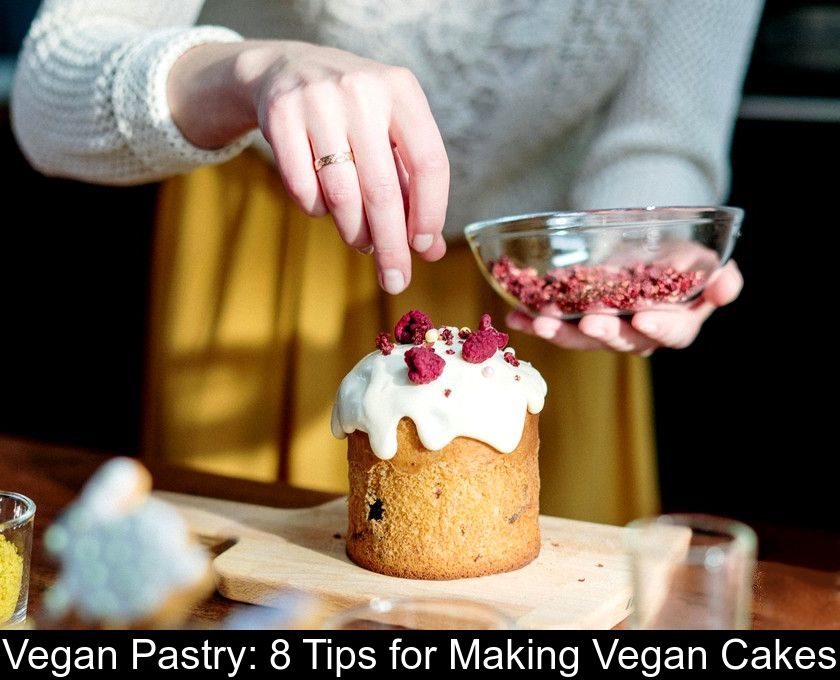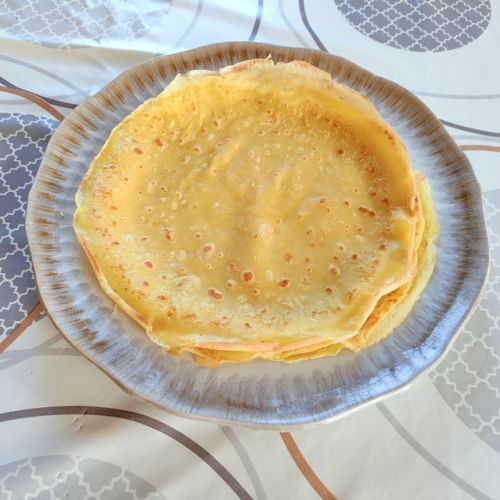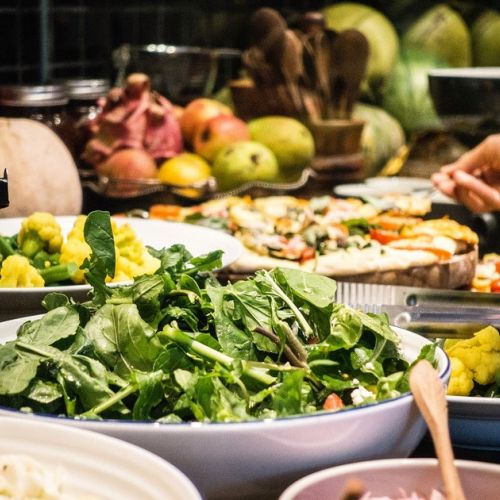Vegan Pastry: 8 Tips For Making Vegan Cakes
Many food enthusiasts are still unaware, but vegan baking is a rapidly growing trend among professionals and home bakers alike. By definition, a vegan cake contains no animal-derived ingredients, which requires the baker to find alternatives for eggs, milk, cream, butter, and even honey. For those who want to try their hand at plant-based baking, here are 8 tips for making vegan cakes.
1- Apple sauce
Lighter, healthier, and more respectful of animal welfare, vegan baking has numerous benefits. Yet, this term may seem like an oxymoron, as eggs and dairy products appear indispensable in the recipes for desserts and cakes.
If you think that making a cake without eggs is impossible, think again! There are several highly effective alternatives, starting with apple sauce. This ingredient is the first of 8 tips to know for making 100% plant-based cakes.
More specifically, all fruit purees can be used in vegan baking, provided they have a thick texture. Apple sauce is the most common for vegan cakes because it's both the cheapest and has the most neutral taste.
Regarding proportions, about a 100g pot of apple sauce is needed to replace one whole egg. If you're adapting a traditional cake recipe for the first time, such as making a vegan birthday cake, incorporate the apple sauce gradually and rely on the batter's texture to properly measure this ingredient.
The crushed banana
Mashed banana is another trick that works well for making vegan cakes. Simply choose ripe fruits and puree them with a fork or blender.
The texture of mashed banana, which is both thick and slightly sticky, closely resembles that of an egg yolk. That's why this ingredient is often used in vegan baking for cake batters, as well as in pies and ice creams or nice cream...
In a plant-based dessert, one medium-sized ripe banana is equivalent to one whole egg.
3- Chickpea juice
When you start with vegan baking, you're often amazed by the alternative solutions offered in recipes. As incredible as it may seem, the chickpea brine or aquafaba perfectly mimics egg whites! Just whip it with a mixer with a bit of powdered sugar to get meringue-like peaks that are indistinguishable from the real thing.
This trick is very useful not only for making vegan cakes but also for chocolate or fruit mousses, and even meringues and macarons…
4- Silken tofu
Another possibility for preparing vegan chocolate mousse and other desserts with a creamy texture is to use silken tofu. This Asian soy-based product has a relatively neutral taste and a very interesting texture for binding all kinds of mixtures. It is often used to make vegan desserts and cakes, and more broadly, to replace eggs and/or cream in savory recipes such as quiches, for example.
5- Nut butters
In plant-based baking, it is not possible to replicate the taste of butter. You won't find exactly the same flavor when using a vegetable oil, such as sunflower oil, for example...
However, you can replace the texture of butter and experiment with new flavors in your vegan cakes thanks to nut butters.
In plant-based baking, there's an abundance of choices including almond butter, cashew butter, sesame paste, peanut butter, and hazelnut spread. The first two are the most neutral in taste, while the latter three provide a distinctly pronounced flavor to cake batter.
6- The crushed avocado
Another tip for replacing butter in vegan cakes is to use mashed avocado. To enjoy the very creamy texture of this fruit, it is of course necessary to choose ripe avocados.
Retrieve the flesh of the fruits and mash it with a fork. Take the time to mash the avocado well because the resulting puree must have the consistency of softened butter.
All that's left to do is incorporate it into your vegan cake, knowing that 100 g of avocado puree is equivalent to 100 g of butter.
7- Plant-based beverages
Among the 8 tips for making vegan cakes, one of the best-known is to use plant-based milks such as almond or hazelnut milk to replace cow's milk.
If you're looking for a more neutral-tasting liquid, you can also use soy or oat milk, or even water!
It's not always considered, but water is a very simple solution for replacing milk in desserts, especially for those who are lactose intolerant. It can also help to thin out certain thick plant-based milks like coconut milk.
Agar-agar
The last of the 8 tips for making vegan cakes will be useful if you are looking for a plant-based gelling agent to prepare a flan or mousse.
Agar-agar powder is the best solution to replace animal-derived gelatin. This white powder is extracted from a Japanese red algae.
But be careful! To achieve the desired gelling effect, you must strictly follow the instructions for using this product. You should:
• measure the agar-agar carefully. The amount used determines the texture of the dessert.
• mix the powder into the liquid while cold, stirring until fully dissolved.
• always bring the liquid to a boil and boil for at least 30 seconds.
• cool the mixture, first at room temperature, then in the refrigerator. The gelling effect of this powder appears during cooling.











